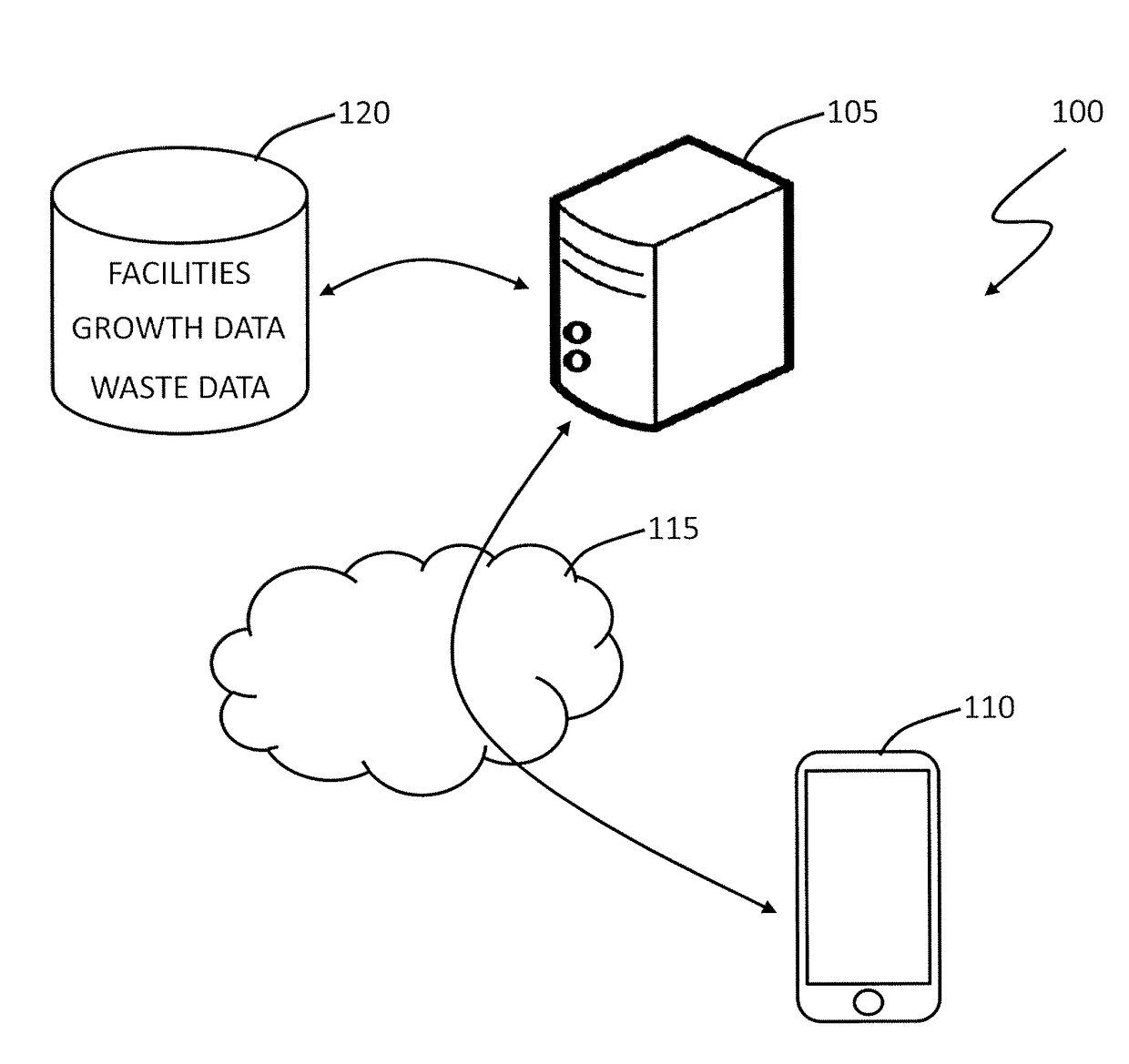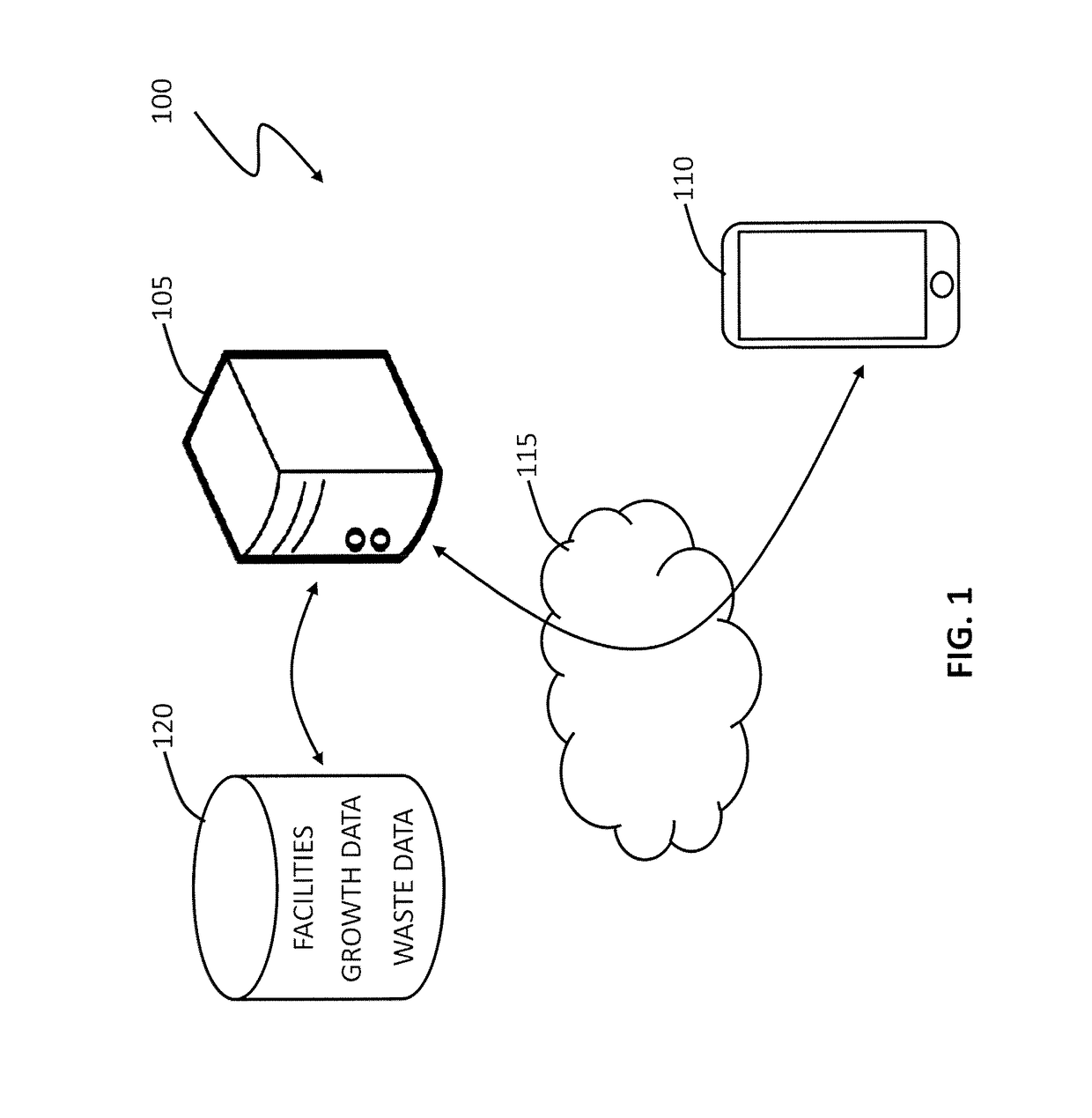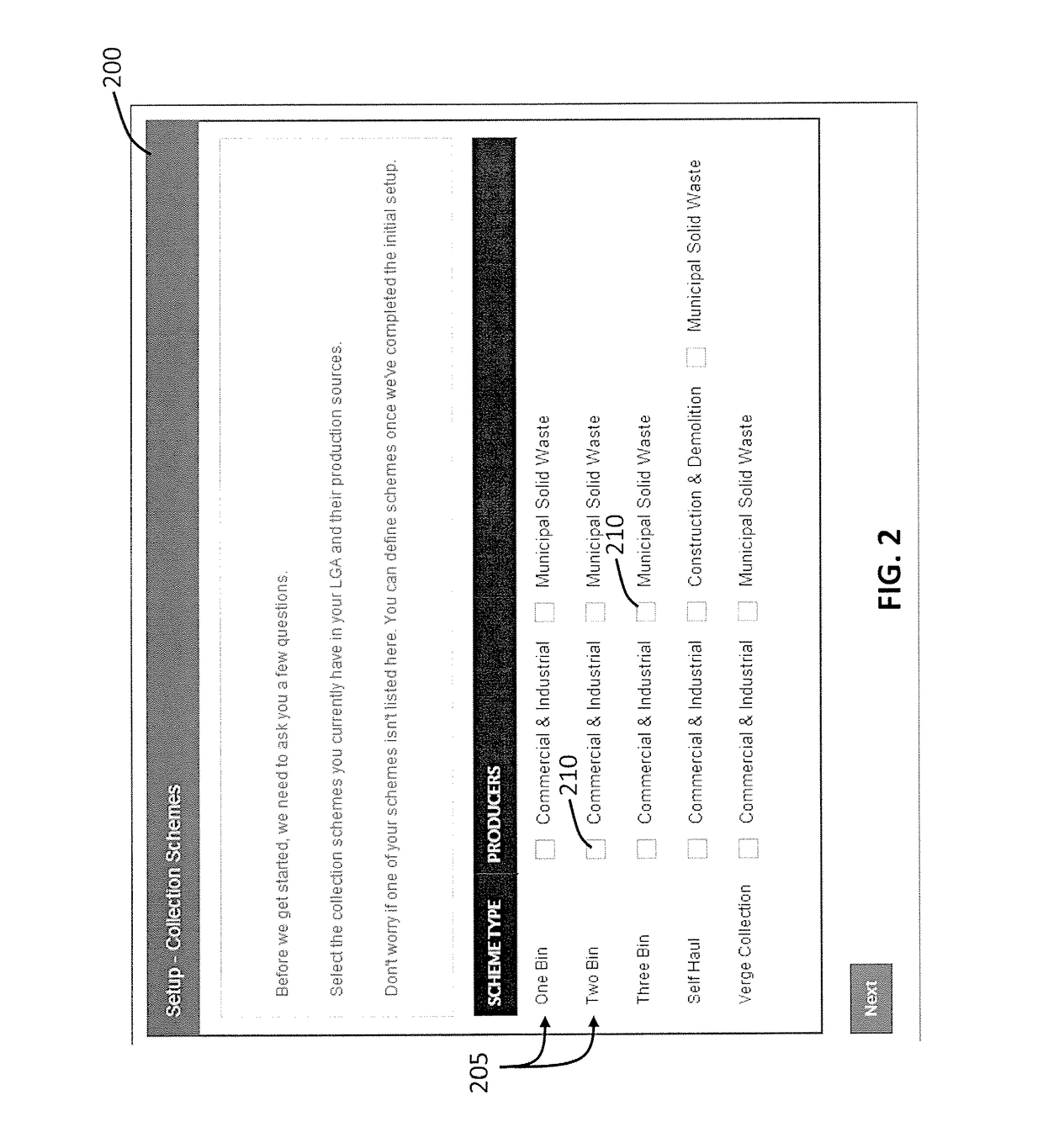Waste management simulation system and method
a waste management and simulation system technology, applied in the field of waste management, can solve the problems of significant data acquisition and cleansing activities, time-consuming and expensive, and the building of new waste management facilities is generally a costly and slow process, and achieve the effect of defining the scope and granularity of the system
- Summary
- Abstract
- Description
- Claims
- Application Information
AI Technical Summary
Benefits of technology
Problems solved by technology
Method used
Image
Examples
Embodiment Construction
[0087]FIG. 1 illustrates a waste management simulation system 100, according to an embodiment of the present invention.
[0088]The waste management simulation system 100 includes a server 105, for providing a graphical user interface (GUI) to a user device 110, by a communications network 115, such as the Internet.
[0089]The server 105 is coupled to one or more data stores 120, which include waste input data, waste management facility data, and growth data. The skilled addressee will, however, appreciate that the waste input data, waste management facility data, and growth data can be provided by a user on demand, or determined at least partly according to parameters provided by the user.
[0090]The GUI, described in further detail below, enables a user to interactively define a waste management model. The waste management model includes a plurality of waste inputs, defined according to the waste input data, and a plurality of waste management facilities, defined according to the waste m...
PUM
 Login to View More
Login to View More Abstract
Description
Claims
Application Information
 Login to View More
Login to View More - R&D
- Intellectual Property
- Life Sciences
- Materials
- Tech Scout
- Unparalleled Data Quality
- Higher Quality Content
- 60% Fewer Hallucinations
Browse by: Latest US Patents, China's latest patents, Technical Efficacy Thesaurus, Application Domain, Technology Topic, Popular Technical Reports.
© 2025 PatSnap. All rights reserved.Legal|Privacy policy|Modern Slavery Act Transparency Statement|Sitemap|About US| Contact US: help@patsnap.com



